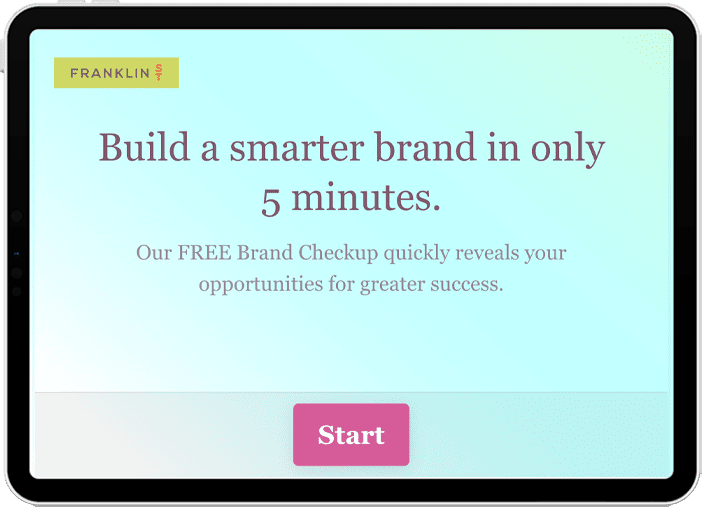Innovation, the act of solving problems in new and better ways, is one of the most valuable endeavors we all perform. Innovation can occur at the strategic level such as when deciding where to locate your next cancer center, or at the everyday level when you deal with an unhappy patient.
At its most basic, we achieve innovation by simply looking at the problem in front of us through a different filter which allows us to connect dots we previously could not see.
However, the business culture of healthcare is built on trending data, best practices and evidence-based outcome, and while these are very important for obvious reasons, they can inadvertently slow our progress toward the very opportunities we seek and set us on course toward “more of the same.”
Here are 5 quick tips to help you, and your healthcare colleagues, step outside your comfort zone and shift your mindset into an innovative state, regardless of the situation, right now.
1. Remember to forget
We all work hard to gain knowledge and become smart on the things we are accountable for. However, this focused effort trains our brains to see the world in a fairly consistent way. And over time, this can result in us “knowing” the answer before the question is even fully asked, which makes new answers highly unlikely. This is what leads to the all too common answer, “…because we have always done it that way.”
To counter this, we have to do one of the hardest things necessary to become truly innovative, forget what we know. This is often referred to as “a beginner’s mind” and dates back to Zen Buddhism. But it is also a common practice used in modern human-centered design theory. While difficult to do, the idea is simple, approach the situation without any preconceived notion of the appropriate solution. This promotes new curiosity and makes it easier to generate a large number of alternative options because we have given ourselves permission to abandon past precedents. For example, for Apple to be the company they are today, they had to forget they were a computer company and dropped “Computer” from their name before launching the iPhone. What will hospitals have to forget to effectively shift from “sick care” to “health care”?
2. Change your shoes
Sometimes the easiest way to change your mindset is to take off your shoes, metaphorically of course, and put on those of your customer or patient. Walking a mile in your customers’ shoes will give you the opportunity to experience the problem through their lens. Your customers’ experience being the key idea here. Allow yourself to imagine not only what your customers may think, but also what they might feel, or if appropriate, smell, taste or hear. Imagine all of your customers’ senses at work as they experience the problem you are trying to address.
Keep in mind we can become numb to the things we see, hear, smell and touch every day. To us they are normal. It may be helpful to use an outside researcher to conduct a few patient interviews to generate the ‘beginner’s mind’ approach. Researchers talking with patients will learn the initial reactions of patients to the stimuli they experience in their journey with us.
3. What would “______” do?
“What would Steve Jobs do?” if experiencing the same situation as you? What would Amazon do? What would Google do? Asking yourself these types of questions allows you to quickly sidestep away from your own built-in biases and adopt a very different point-of-view that will lead you down a unique, and usually proven, path of reasoning. Modeling a well-defined alternate brand, or outspoken celebrity, works well but you can also model ideal employees.
4. MacGyver it!
Television’s action-adventure star MacGyver used to solve near impossible problems “with skills that are only limited by his creativity, Mac saves the day using paper clips instead of pistols, birthday candles instead of bombs, and gum instead of guns.” While cheesy to watch, there is an important lesson here on the art of innovation. Don’t wait for the perfect solution to come along when something very simple and readily at hand can get the job done. For example, is your hospital expansion still a year away? Don’t wait, take action at your current facility by investing in live plants, better light bulbs and soliciting more volunteers to increase the number of patient touches in the lobby area. Dale Carnegie once said, “Inaction breeds doubt and fear. Action breeds confidence and courage. If you want to conquer fear, do not sit home and think about it. Go out and get busy.”
5. Look outside the jar
There is an old saying, “It’s hard to read the label when you are inside the jar.” And we are all in some form of jar. Whether it is our industry jar, geography jar, title jar, etc., we are a product of our immediate surroundings and often succumb to the challenge of not being able to get outside of our own heads. When you live and breathe your business every day, it’s impossible not to breathe your own fumes. You can begin to lose objectivity as corporate precedence takes the place of industry shifts. The best way to gain a broader perspective is to broaden the pool of people working on the problem, usually from outside your company. Respected firms from the outside can quickly bring industry insights, new approaches and examples of similar solutions to the problems you face. Often, resulting in an accelerated pace of organizational growth.
A business culture based on innovation is critical for healthcare brands who want to seize on the opportunities that the dramatic shifts in our industry are bringing. And while the most innovative companies incorporate a suite of processes, specialist and substantial funding, it always starts at the individual level when people begin to shift their own mindsets. And that is something you can do right now.


